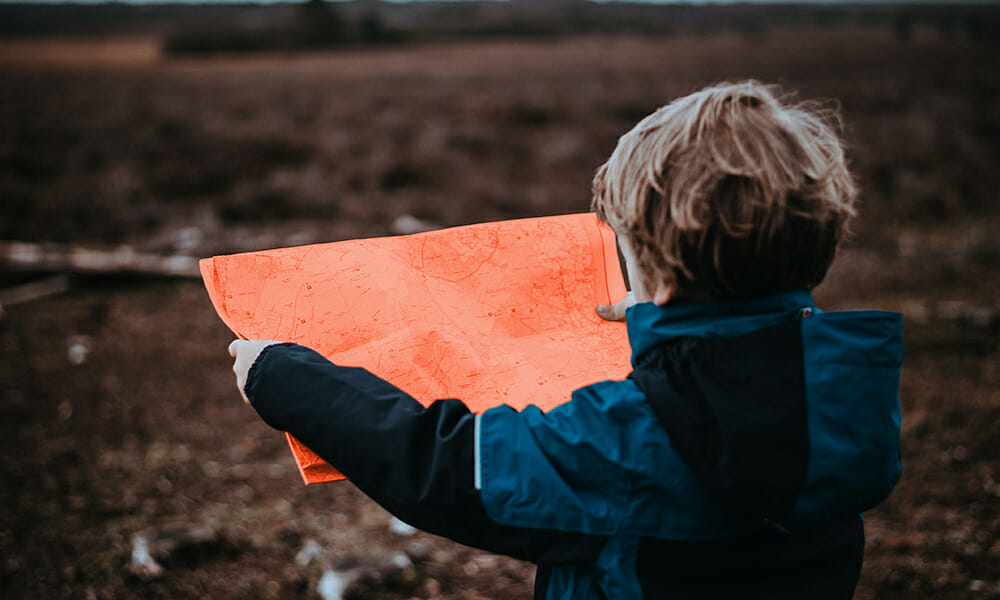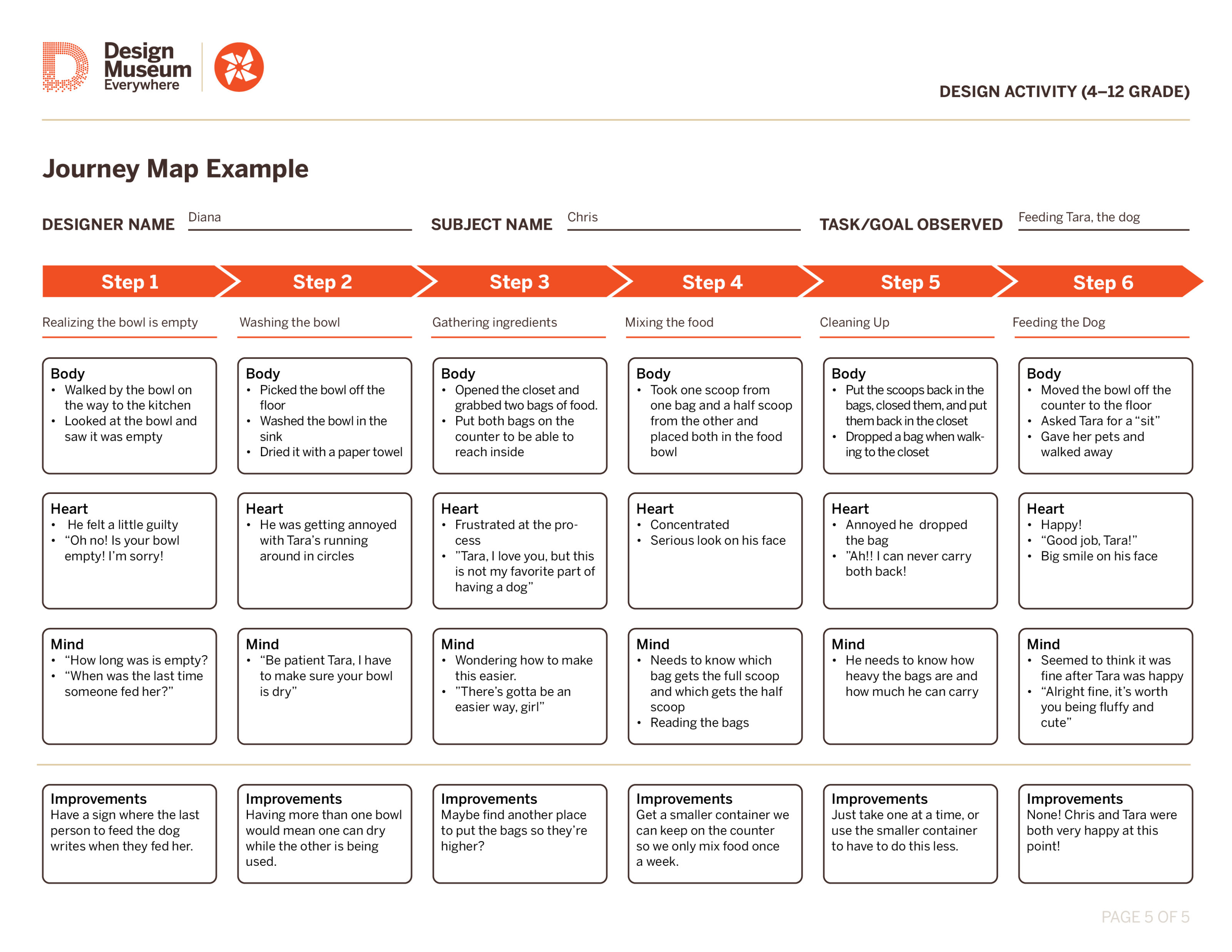Empathy: Journey Mapping
Design Activity (4-12 Grade)
Learners will create a journey map of a partner’s day.

Learners will…
-
Make observations of people from their lives
-
Identify and compare patterns from their observations
-
Understand how journey maps help designers find design opportunities
Share your maps on social media with #DesignTogether and we’ll feature examples in our Design Together online gallery.
INSTRUCTIONS
-
Begin by discussing what Journey Maps are (see below or download our PDF for more information). Ask your learner to choose one task or goal they can shadow someone else tackle.
Examples: Laundry process, making a meal, completing a homework assignment, planning a celebration, redecorating a room. -
Discuss the ways that they can observe without interfering in the process.
Sample Questions: Do you like to be watched when you do things around the house? What are some things you could do while watching that would change the way someone usually finishes a task? Why don’t we want to interfere with what our subjects are doing? -
Challenge your learner to list all the ways they can observe and record their subject’s journey without being distracting.
Examples: Taking notes of what they say, taking photographs of what they do, drawing facial expressions, asking for materials once the goal is achieved. -
Once they understand the scope of their observation, encourage your learner to introduce the project to the subject they will be observing. Remind them that being observed can be nerve-wracking so it’s important that they make their subject feel comfortable.
-
Your learner’s challenge is to document their subject’s journey to accomplishing their goal as accurately as possible. If possible, your learner can observe the journey several times before continuing.
-
After the goal is completed, your learner will need to organize all their findings in a journey map. Feel free to use our template or have your learner create their own! They can accomplish this by splitting their observations into three categories:
Body: What did their subject do?
Heart: How did your subject feel while they were doing that?
Brain: What questions, thoughts, or information did your subject need to move forward? -
Finally, have learners identify opportunities for design.
Guiding Questions: Did the subject say they were frustrated at a certain point in the process? What kind of questions did you subject ask themselves or others during the process? Did you see your subject struggle to complete any portion of their goal?
ABOUT JOURNEY MAPS
A Journey Map is a visual representation of the steps someone takes to achieve a goal. Journey maps can be used to better understand how someone approaches a task or solves a problem. They are useful in the research or empathy stage of the design process. They can also be used in the testing stage as a way to trace how people are making use of a product or design solution.
You can find download our journey map template here and see a filled in example here.


